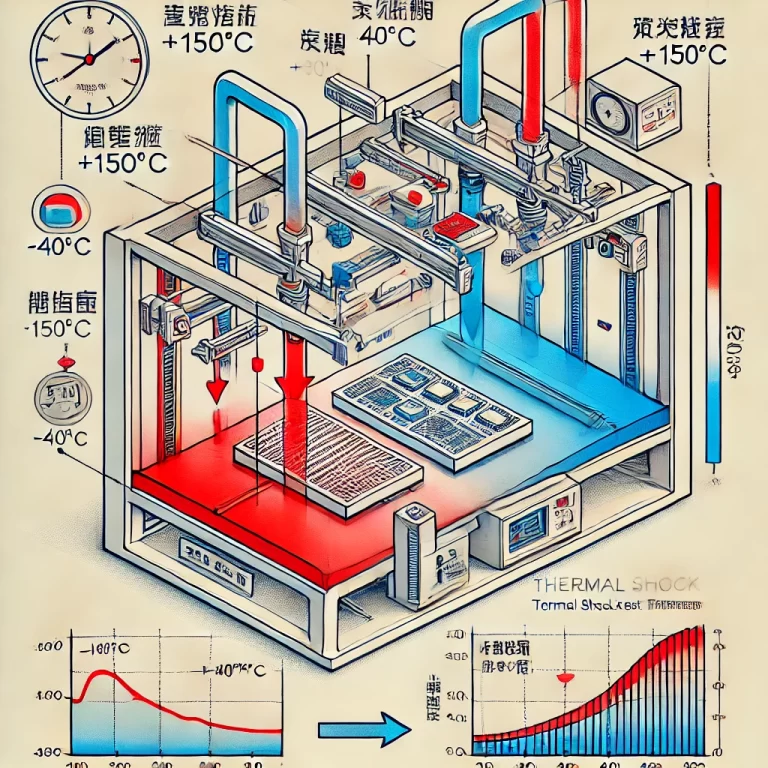In industrial manufacturing, one term that frequently comes up is “thermal shock.” While it may sound technical, the concept is quite straightforward: thermal shock refers to the repeated exposure of materials or components to rapid temperature changes—hot and cold cycles—to assess their thermal fatigue resistance and long-term durability.
🔍 A Common Yet Destructive Phenomenon
Thermal shock can reveal serious hidden problems. Take a simple real-life example: in winter, if you pour hot water over a frozen car windshield, it might instantly shatter. This is a classic case of thermal shock, technically called thermal stress fracture.
Why does it happen? The outer surface of the glass heats and expands quickly, while the inner layer responds slowly. This mismatch in expansion creates internal stress. As glass is inherently brittle, the result is cracking or explosive failure.

✈️ Why It Matters in Industrial Applications
In industrial environments, the consequences are far more severe than just a broken window.
✦ Aerospace Industry
Turbine blades in jet engines often have special coatings. These coatings and the base metal usually have different coefficients of thermal expansion. Under extreme operating conditions—rapid heating, cooling, and high-speed airflow—the coating may peel off. This leads to material exposure, posing serious flight safety risks and reducing engine life.
✦ Semiconductor Industry
Microchips operate in environments with frequent temperature fluctuations. Solder joints and packaging materials may experience dozens of temperature cycles per day. Over time, this leads to:
Delamination of encapsulants
Cracked solder joints
Complete chip failure
This is especially critical in automotive electronics and 5G equipment, where solder joints are tiny, and failure can cause entire systems to crash.
⚠️ Typical Failures Caused by Thermal Shock
The impact of thermal cycling can be categorized into three primary failure modes:
1. Surface Cracking and Delamination
This is common in coated or composite materials, such as ceramics or thermal barrier coatings. Repeated heating and cooling generate stress at material interfaces, leading to visible cracks or peeling.
2. Internal Damage in Electronic Components
Issues like solder joint fractures, BGA (Ball Grid Array) ball cracking, or IC delamination stem from uneven thermal expansion within microelectronic assemblies.
3. Metal Fatigue and Embrittlement
This often occurs in metal components such as turbine blades. Repeated thermal cycling causes microstructural degradation, resulting in fatigue failure over time.

🧪 How Is Thermal Shock Tested?
To evaluate thermal shock resistance, industries use standardized test methods:
IEC 60068 (International)
GB/T 2423 (China)
MIL-STD-883 (U.S. Military)
These tests typically use a thermal shock chamber, where the sample is subjected to alternating hot and cold zones until visible or structural failure occurs. The aim is to identify vulnerable points and improve the design or materials.
📌 Suggested Diagram: Schematic of a thermal shock test chamber with hot/cold compartments and temperature-time graph.
🧬 Future Solutions: Better Materials
Solving the problem of thermal shock largely depends on material innovation. Current research focuses on:
High-performance ceramics with better thermal shock resistance
Nano-composite materials for coatings and substrates
Flexible electronic packaging materials with matched expansion rates
When materials improve, devices naturally become more reliable and durable.

✅ Conclusion: Simple Principle, Harsh Reality
Thermal shock, despite sounding complex, comes down to one brutal question:
Can a material survive rapid temperature changes or not?
Those that can withstand the test stay in use. Those that fail are eliminated. The industrial world values results above all—efficient, effective, and often unforgiving.
